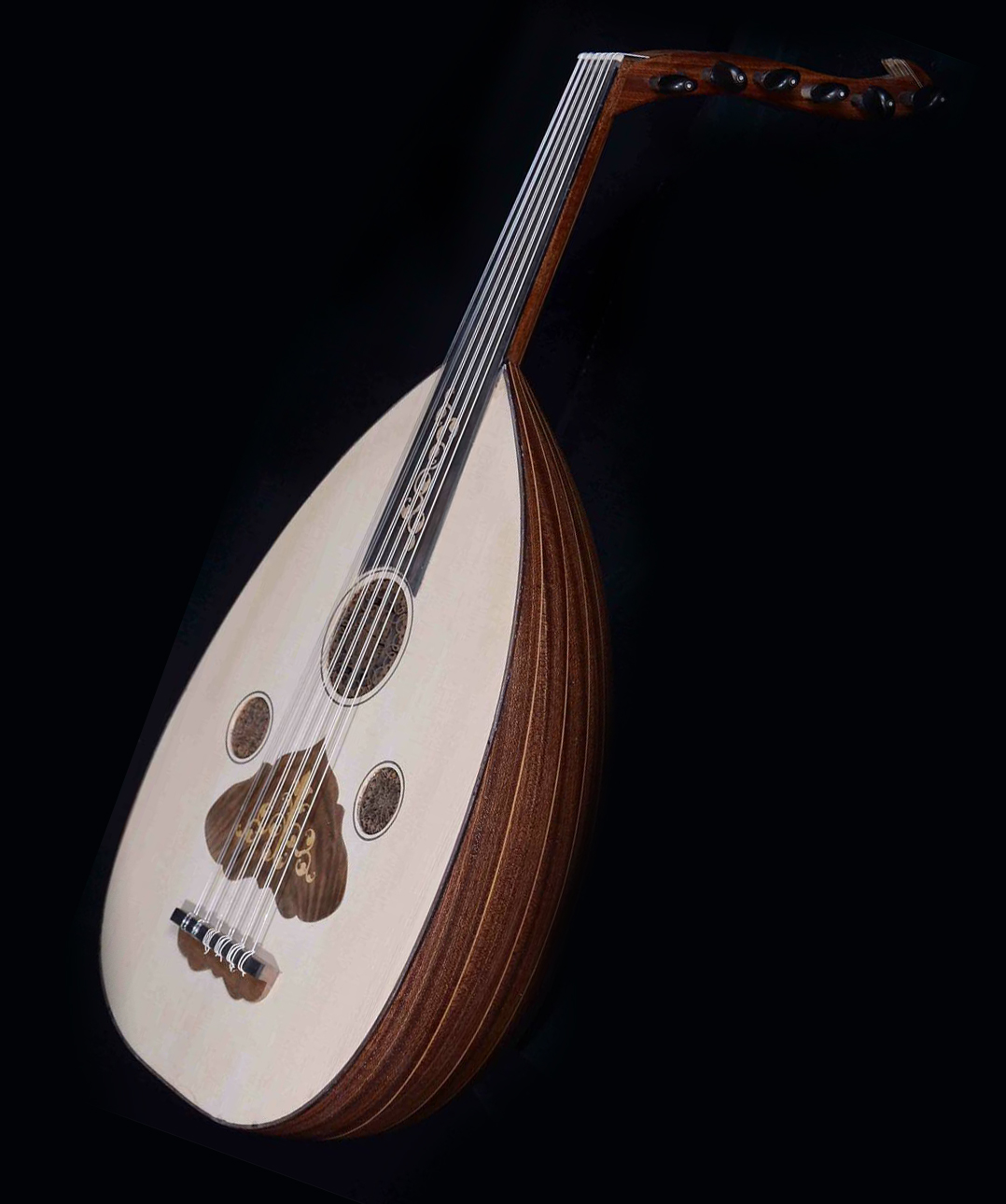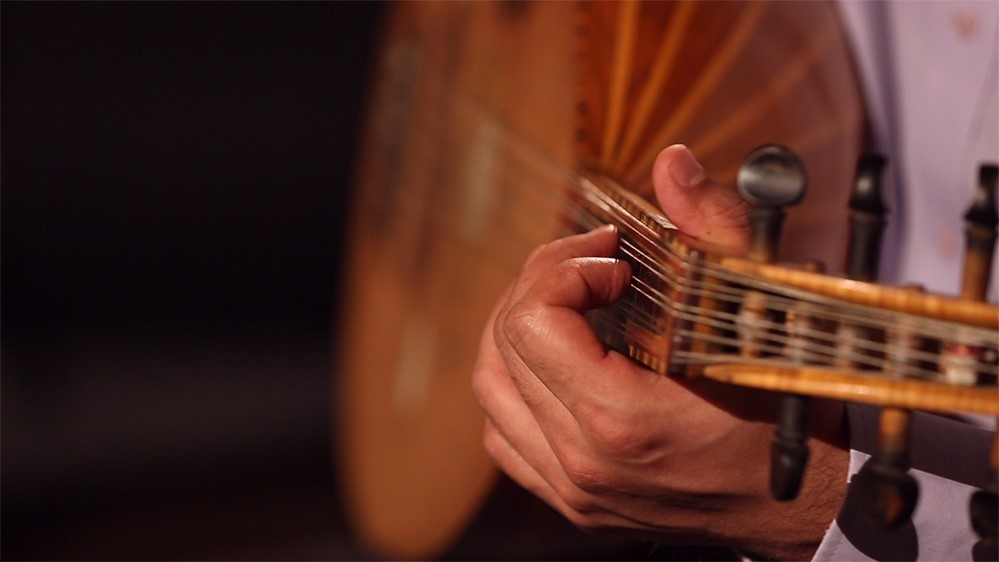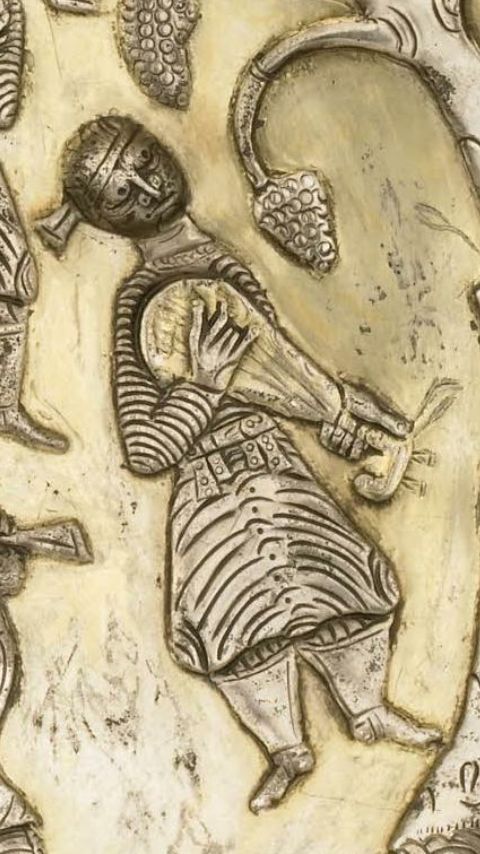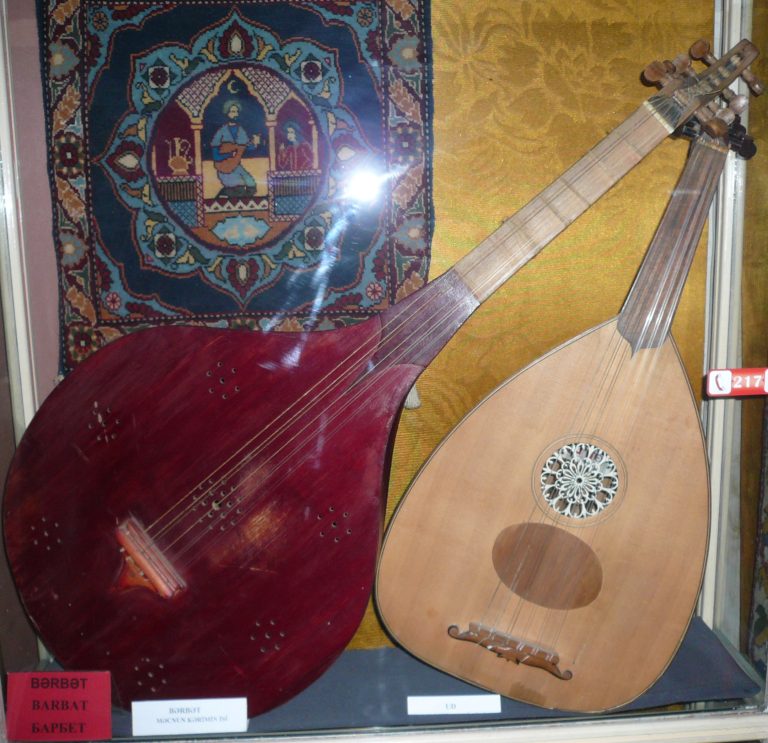ABOUT BARBAT
Historical artifacts, paintings, books, and poems by Iranian poets show that the Barbat (Oud) was common in ancient Persia and its greatest player was Barbad. Some historians believe that the word “Barbat” (Oud) was derived from the name Barbad. Others believe that the word Barbat relates to the chest of a duck. There is a strong similarity between a standing duck and the shape of this instrument. The Barbat is the basis of all music in Iran and most of its surrounding neighbors including Turkey, Iraq, Syria, Egypt, and etc. This instrument traveled to the Far East via the Silk-Road where it evolved into the PIPA in China and the BIWA in Japan. During the Holy Wars the Iranian musician Zaryab introduced the Barbat into Spain where its name was changed from AL OUD to LE OUD and then later to LUTE .


After the advent of Islam in Iran, the Barbat became the chief musical instrument of the Arab world. The size of its bowl was increased, its neck was shortened, a 6th string was added to serve the Arab needs better, and the name OUD (meaning wood in arabic) was given to it. Due to its great reception by the Arabs, many Iranian players such as Ebrahim Mooseli and his son Eshagh Mooseli moved to Iraq and other Arab countries to teach the technique of this instrument to the Arabs. Ebrahim was of Iranian descent and took the name “Mooseli” upon moving to the city of Moosel in modern day Iraq. The immigration of Iranian musicians to Arab countries caused a diminishment in the usance of the oud in Iran until during the Safavid Era, for unknown reasons, this instrument was completely abolished.
In 1996, after years of research, master builder Mr. Ebrahim Ghanbari-Mehr designed and built a BARBAT that resembles the original form of this instrument used in Iran before the Arab invasion. Unique characteristics of this instrument include:
Fingerboard length- 37cm; Neck length- 26cm; On-face finger board- 11cm; String length- 61.5cm; Bowl length- 44cm ;Bowl width- 30cm; Bowl depth- 20cm

The smaller bowl size allows for a more comfortable interaction between the player and the instrument. The unique design and lay out of the bridges that lie beneath the soundboard give this instrument a louder sound and far greater sustainability (echo) when compared to Arab and Turkish Ouds. Most importantly, the longer neck and the addition of the on-face fingerboard allow the player to reach notes in the higher octave and eliminate the need for a 6th course. A total of approximately 3 octaves is covered starting at G2=98Hz up to F5=696Hz which is more consistent with other instruments used in Iranian traditional music.
Since 1996, Behroozinia has been performing exclusively with this instrument in the hope of returning to this instrument its Iranian identity. His efforts have been virtuous and the Barbat is becoming more popular in Iran.

The lute-type instrument from a decorated dish, Sasanian Iran (7th-8th centuries A.D.) was pointed out by Michael Nixon as a possible barbat.

